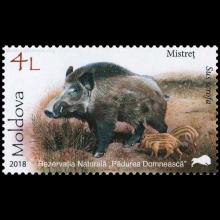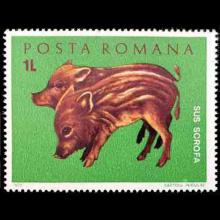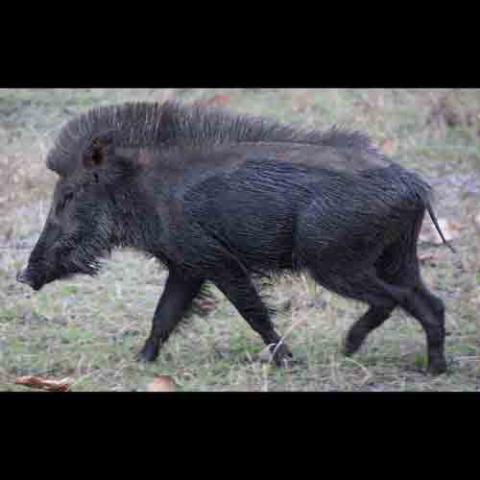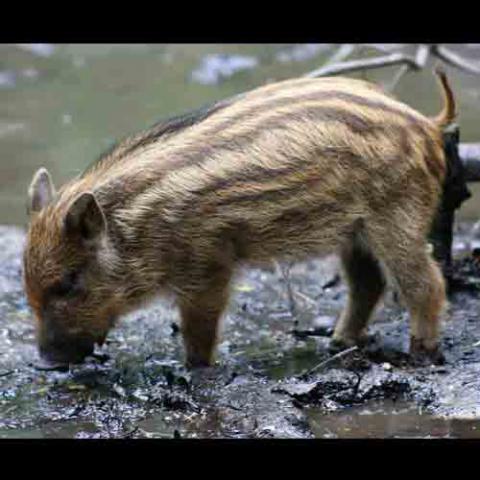NAMES
TAXONOMY
Moldova
Issued:
Stamp:
Sus scrofa
Romania
Issued:
Stamp:
Sus scrofa
Moldova
Issued:
Stamp:
Sus scrofa
Romania
Issued:
Stamp:
Sus scrofa
Moldova
Issued:
Stamp:
Sus scrofa
Romania
Issued:
Stamp:
Sus scrofa
A Pack of Feral Hogs Sniffed Out a Cocaine Stash in Italy
Animals destroyed stockpile of drugs buried in Tuscan forest worth approximately $22,000
By Jon Blistein
A pack of feral hogs in Italy sniffed out, dug up, and destroyed a stash of cocaine buried in a forest in eastern Tuscany, the Italian edition of The Local reports.
The stash was reportedly worth €20,000 (about $22,000) and had been left in a forest near the town of Montepulciano by a group of suspected drug traffickers. While listening to wiretaps of the suspects, authorities heard them complaining about how wild hogs had unearthed the cocaine and scattered it around the forest.
Newsweek noted that the investigation into the drug traffickers began last year after a 21-year-old Albanian woman was murdered. Eventually, law enforcement uncovered a drug trafficking network that covered several provinces in central Italy. The traffickers reportedly moved about four pounds of cocaine a month, earning between $90 to $120 per gram.
It’s unclear how many feral hogs took part in the inadvertent coke bust (one can only hope it was between 30 and 50), nor is it known how exactly the animals, with their prominent snouts, reacted to the drugs.
As The Guardian recently noted, feral hogs are an increasing nuisance in Italy, destroying farmland, attacking people and causing thousands of car accidents a year (13 people were reportedly killed in collisions with the hogs between January and September). The problem has gotten so bad that, earlier this month, farmers from across Italy ventured to Rome, demanding the government take action against the feral hog scourge (fingers crossed no one asks that guy in Jason Isbell’s mentions for his advice).
Genus species (Animalia): Sus scrofa
The wild boar (Sus scrofa), also known as the "wild swine", "common wild pig", or simply "wild pig", is a suid native to much of the Palearctic, as well as being introduced in the Nearctic, Neotropic, Oceania, the Caribbean islands, and Southeast Asia. Human intervention has spread it further, making the species one of the widest-ranging mammals in the world, as well as the most widespread suiform. It has been assessed as least concern on the IUCN Red List due to its wide range, high numbers, and adaptability to a diversity of habitats. It has become an invasive species in part of its introduced range. Wild boars probably originated in Southeast Asia during the Early Pleistocene and outcompeted other suid species as they spread throughout the Old World.
As of 1990, up to 16 subspecies are recognized, which are divided into four regional groupings based on skull height and lacrimal bone length. The species lives in matriarchal societies consisting of interrelated females and their young (both male and female). Fully grown males are usually solitary outside the breeding season. The grey wolf is the wild boar's main predator in most of its natural range except in the Far East and the Lesser Sunda Islands, where it is replaced by the tiger and Komodo dragon respectively. The wild boar has a long history of association with humans, having been the ancestor of most domestic pig breeds and a big-game animal for millennia. Boars have also re-hybridized in recent decades with feral pigs; these boar–pig hybrids have become a serious pest wild animal in the Americas and Australia.
Taxonomy and evolution
MtDNA studies indicate that the wild boar originated from islands in Southeast Asia such as Indonesia and the Philippines, and subsequently spread onto mainland Eurasia and North Africa. The earliest fossil finds of the species come from both Europe and Asia, and date back to the Early Pleistocene. By the late Villafranchian, S. scrofa largely displaced the related S. strozzii, a large, possibly swamp-adapted suid ancestral to the modern S. verrucosus throughout the Eurasian mainland, restricting it to insular Asia. Its closest wild relative is the bearded pig of Malacca and surrounding islands.
Reference: Wikipedia




